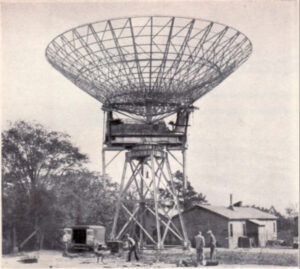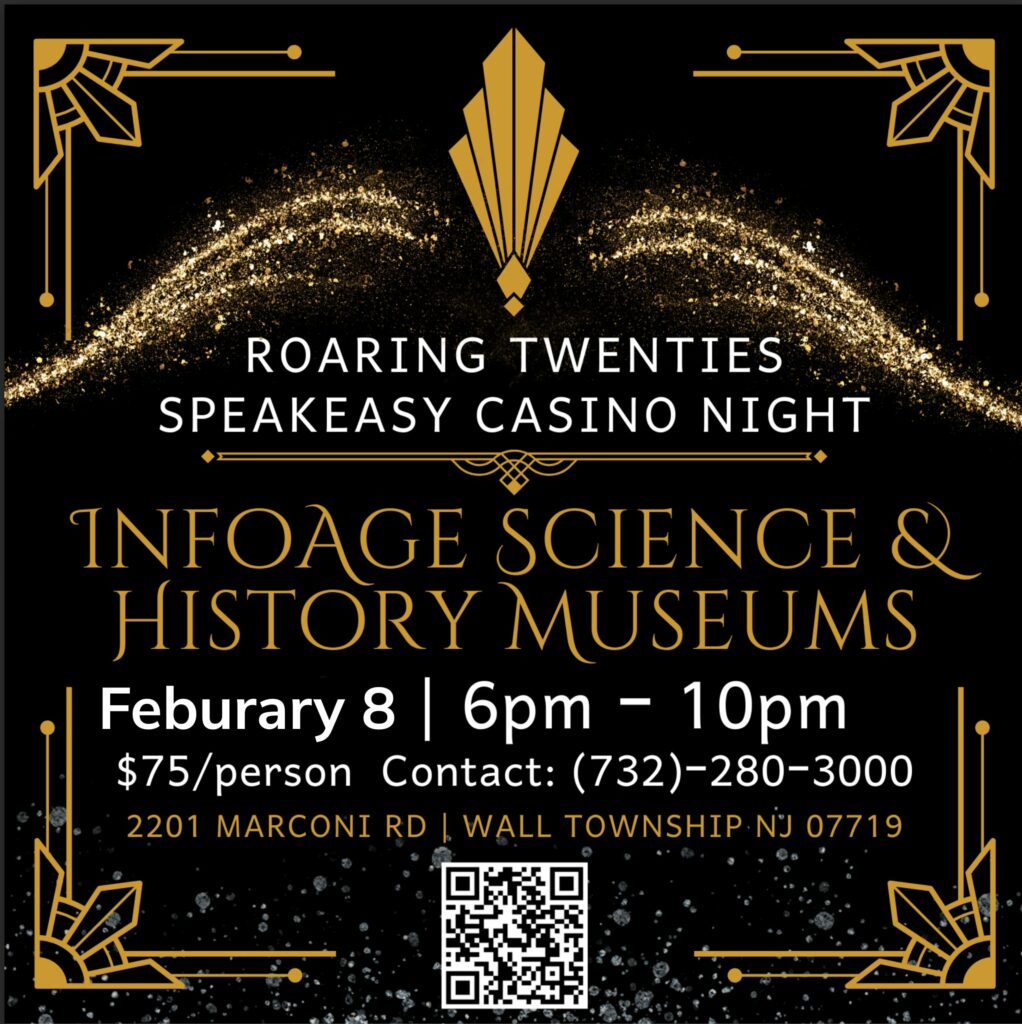The History of InfoAge Science & History Museums
Space Age - How Radar Will Watch Satellite Published in Popular Science in the September 1955 issue; Page 132
Published in Popular Science in the September 1955 issue; Page 132

This huge new radar will keep in touch with the moon —and possibly with the planets.
SUPPOSE you were asked to referee a sandlot basketball game in Boston from a seat atop the Empire State Building in New York. Impossible? That’s what scientists will do to observe the man-made satellites being launched in 1957-58.
The “birds” are basketball-size. They’ll be 200 to 300 miles away.
Actually it’s quite simple to see so far with radar. The long and delicate finger of electronics can reach greater distances to find even smaller things.
The size is important. A small object —with dimensions close to the length of a radar wave—is “tuned ” to the wave striking it and bounces a great deal of the wave’s energy back. It’s the same thing that happens when you strike a musical note and a nearby water glass vibrates the note back at you. The small things are easy to “see” with radar—seagulls and geese, for example, often cause false warnings on our coast-defense radar.
The bird-watchers might use equipment like the Signal Corps’ new moon-tracking radar, which can keep the moon under continuous observation and could probably contact Venus and Mars.
The new moon radar, called Diana, is the biggest of its type yet built. It pinpoints the moon with a stream of high-powered radar pulses, averaging an output of 50,000 watts and using up enough electricity to light a city. A small electrical brain keeps this searchlight trained on the moon the way an antiaircraft gun is kept aimed at an enemy plane.
Scientists at Evans Signal Laboratory are anxious to learn how the atmosphere and space affect very short radio waves. They use the moon as a gigantic mirror to reflect their radio waves back to earth. This permits them to study, waves that have traveled nearly half a million miles. Even longer paths could be secured by using a planet as a mirror.
page created April 24, 2007
We Need Your Help! Volunteer with Us.
Join our mission to preserve historic Camp Evans and teach the public about science and history.
Sign up to join our team of volunteers and start on your own mission today.
InfoAge Science & History Museums
2201 Marconi Road
Wall, NJ 07719
Tel: 732-280-3000
info@infoage.org
webmaster@infoage.org

